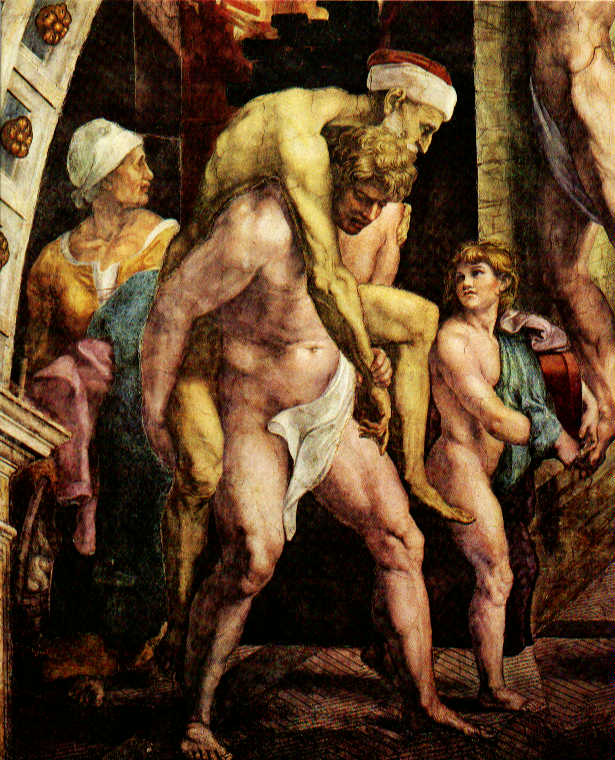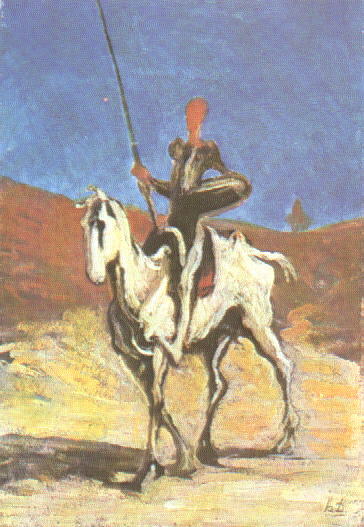 |
LITERATURE
HUMANITIES
HAM 407, TR 4:10-6:00 |
|
Literature Humanities: Paper # 1 (6p)
Instructions: Write a 6 page paper on one of the 12 topics below. The
paper is due Monday Mar. 4 by noon in my mailbox. The questions are complex
and could be answered at great length: your job is to work out and construct
substantial argument, and condense it into a few pages, using only the evidence
you need—no more. The depth and subtlety of the argument—i.e. of the thinking
you do before you begin to write—are
the crucial elements here.
1. In the Aeneid, what does it mean to rebuild Troy? Is it possible? Is it desirable? Is it inevitable? Can the past be repeated? can repetition be avoided? What happens to attempts to resurrect the city—and why?
2. The Trojan landing in Latium seems to mirror the Greek landing at Troy. Have the Trojans now changed places with their former aggressors? Are they the new Greeks in a new Iliad, and the Italians the true Trojans? Is the analogy appropriate? If so, to what extent, if not, how does this ‘repetition’ introduce ‘difference’?
3. Land and Names: both are essential to identity politics, now as then, and are equally grounds for bloodshed; both are inextricably linked. How are the intricate politics of ‘land’ and ‘names’ worked out in the Aeneid [cf. esp. VI & VIII]? Turnus lifts a stone “set up... to prevent landowners’ quarrels” to throw at the land-thief Aeneas (XII.1220): what other ‘signs,’ ‘traces,’ and ‘names’ affixed to the land (and people) must be uprooted, changed, or rebaptized for Italy to become Rome?
4. Images play a decisive role in the Aeneid: as ghosts, visions, memories, artworks, shades, and so forth. From Hector and Creusa’s appearance to Aeneas in Troy, to Turnus’ flight after a phantom and his strange distraction in the final duel, the “image” intervenes persistently in human action (more than the gods?). What is an “image,” how does it work, what does it do, why is it powerful?
5. How does the “image” work in Saint Augustine?
6. Saint Augustine lists three forms of lust (p.47) which undermine the will: what are some examples in his narrative that flesh out these types, and deepen his conception of the human will and its limitations? How are these temptations overcome?
7. The Confessions begins with a reflection on language learning (Bk.I) and ends with a theory of interpretation (Bk. XII). Why does the infant learn language? Why and how does the convert read? How are the will to power and the power to will related to our use of language?
8. Discuss Saint Augustine’s conception of evil. What is it and how is it? Why does the question of its nature bother him so? Using textual examples (i.e. babies, the pear tree, etc.), show how he works through this problem.
9. The Inferno is, in a sense, a voyage to the origin of evil as well: Lucifer, or the “worm” at the base of the universe, is a symbolic heart of darkness. Does that figure answer the question about the “origin of evil”—about “how [Dante] had entered the wood” (I.10), about “the first root of [P & F’s] love” (V.125), etc.? Where else in the poem is this question put and potentially answered by Dante?
10. The poet of the Inferno recounts the pilgrim’s journey—but is himself a sort of literary pilgrim whose labors must not stray from the “straight path”: how do we become aware of this verbal labor—imaginative, poetic, linguistic—in which the poet attempts to illuminate the depths of hell? how are poetry and evil related?
11. Is the Inferno an Aristotelian tragedy? “Pity” and “fear” are emotions that seem to occur frequently in hell. The poem also gives an account of lives which end in “misfortune.” Is the analogy appropriate? If so, why—and to what extent is it misleading?
12. The Ulysses episode in Inferno explicitly raises the question of the “epic journey” and “experience.” Can it be read self-reflexively—as pertaining to Dante the pilgrim? to Dante the poet?
